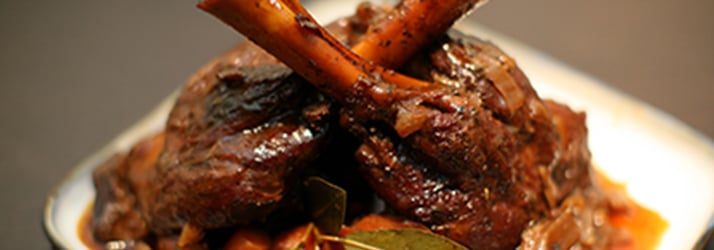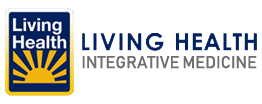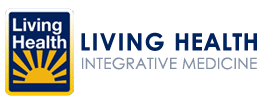How to Read Meat Labels
How to Read Meat Labels

In our practice, we recommend that our patients buy and consume organic, grass fed, pastured, and wild caught proteins. Below are a few of the top reasons why:
- Eliminate or minimize exposure to chemicals, pesticides, herbicides, and fertilizers. Effects from these chemicals include but are not limited to toxicity, cancer, infertility, birth defects, autism, neurological disorders, etc.
- Hormones given to animals may cause hormonal imbalances in humans and increase risk for cancer, especially hormone driven cancers such as breast and prostate.
- Feed lot animals are often given antibiotics for illness, infection, and bacterial contamination due to the quality of their living conditions. This can contribute to development of antibiotic resistant strains of organisms or “super bugs”
- Grass-fed and pastured beef contain 3-5 times more than grain fed of conjugated linoleic acid (CFA) which has been shown to fight cancer. It also contains slightly higher anti-inflammatory omega-3 fatty acids. It’s higher in beta-carotene and Vitamin E.
- Grains that are fed to the animals can be GMO and grains are not natural for cows and their digestive systems.
- Stressed animals have higher levels of steroid hormones which we then consume. Animals that have been humanely raised and slaughtered produce better quality meat.
- Farm raised seafood has lower levels of omega 3 than wild- caught. Farmed raised sea food is often fed GMO corn and soy and can be raised in inhumane conditions (close quarters, disease, polluted environment). One study investigated over 700 salmon samples from around the world and found that on average, the PCB concentrations in farmed salmon were eight times higher than in wild salmon (Toxins get stored in fat). Wild caught salmon eat krill and shrimp which have high amount of a reddish-orange compound called astaxanthin. Farmed salmon is injected with pink color.
What should you look for on labels when shopping?
- 100% Grass Fed (beef, bison, goat, lamb, sheep)- Grass fed from birth to slaughter. Grass fed can be fed grain last 2-3 months before slaughter. *doesn’t mean they weren’t given antibiotics or hormones. No federal standard.
- Free-range- Poultry allowed access to outdoors Cage-free- hens not raised in cages but doesn’t mean they have access to outdoors
- Natural –The USDA defines natural as a product containing no artificial ingredient or added color and is only minimally processed. Minimal processing means that the product was processed in a manner that does not fundamentally alter the product. The label must include a statement explaining the meaning of the term natural (such as "no artificial ingredients; minimally processed"). Doesn’t mean much and is interpreted by consumers as healthier.
- No Nitrates or Nitrites Added- should also say “uncured” Refers to processed meats like bacon, lunchmeat, and hot dogs. Can contain naturally occurring nitrates like celery powder. USDA regulated labeling claim.
According to the EWG these are the gold standard to look for when purchasing your proteins:
 USDA Organic- Can be used to label any product that contains a minimum of 95 percent organic ingredients. Up to 5% may by nonorganic. Different than 100% organic. Animals only fed organic (pesticide and herbicide free) non GMO diet. Animals must have access to fresh air and direct sunlight. No antibiotics allowed. May have USDA label. Can be grain fed.
USDA Organic- Can be used to label any product that contains a minimum of 95 percent organic ingredients. Up to 5% may by nonorganic. Different than 100% organic. Animals only fed organic (pesticide and herbicide free) non GMO diet. Animals must have access to fresh air and direct sunlight. No antibiotics allowed. May have USDA label. Can be grain fed.
 American Grassfed Association: Conducted by a third-party, certifies that the animal has eaten nothing but grass from weaning to harvest, has not been confined, never given antibiotics or hormones. No feedlots allowed. No GMO feed allowed.
American Grassfed Association: Conducted by a third-party, certifies that the animal has eaten nothing but grass from weaning to harvest, has not been confined, never given antibiotics or hormones. No feedlots allowed. No GMO feed allowed.
 Certified Humane- Third Party Organization. Must have continuous access to outdoors (only applies to beef, not dairy) No cages or crates. No antibiotics. Slaughter facilities audited. GMO feed feedlots allowed.
Certified Humane- Third Party Organization. Must have continuous access to outdoors (only applies to beef, not dairy) No cages or crates. No antibiotics. Slaughter facilities audited. GMO feed feedlots allowed.
![]() Global Animal Partnership- Non-profit organization of farmers, scientists, retailers, manufacturers, and animal advocates. Use 5 step system for labeling. Require third party audits every 15 months. Detailed standards to minimize painful physical alterations (tail docking, beak trimming, etc.). Steps 1-2 don’t require access to outdoors.
Global Animal Partnership- Non-profit organization of farmers, scientists, retailers, manufacturers, and animal advocates. Use 5 step system for labeling. Require third party audits every 15 months. Detailed standards to minimize painful physical alterations (tail docking, beak trimming, etc.). Steps 1-2 don’t require access to outdoors.

 American Welfare Approved- Humanely bred, raised, transported, and slaughtered. Prohibits painful physical alterations. GMO feed may be allowed.
American Welfare Approved- Humanely bred, raised, transported, and slaughtered. Prohibits painful physical alterations. GMO feed may be allowed.
 Food Alliance Certified-Grassfed- Outdoor or pastured, grass fed, no grain. GMO allowed. No antibiotics. No audits for slaughter
Food Alliance Certified-Grassfed- Outdoor or pastured, grass fed, no grain. GMO allowed. No antibiotics. No audits for slaughter
 Marine Stewardship Council- certifies wild-caught fish. Ensures sustainability. Requires traceability from ocean to plate. Not grown with antibiotics or growth hormones.
Marine Stewardship Council- certifies wild-caught fish. Ensures sustainability. Requires traceability from ocean to plate. Not grown with antibiotics or growth hormones.
**Organic seafood is generally farmed. The federal government doesn’t presently allow any domestic seafood to be certified as organic, although fish labeled as organic can be legally imported into the United States.
Wild-caught FDA has no rules to define claims and does not perform regular inspections to verify.
Organic certification can be expensive. Many small farms may practice organic and sustainable farming but choose not to get the certification due to the cost. You can locate local farmers markets or CSAs by going to www.localharvest.org
Resources:


